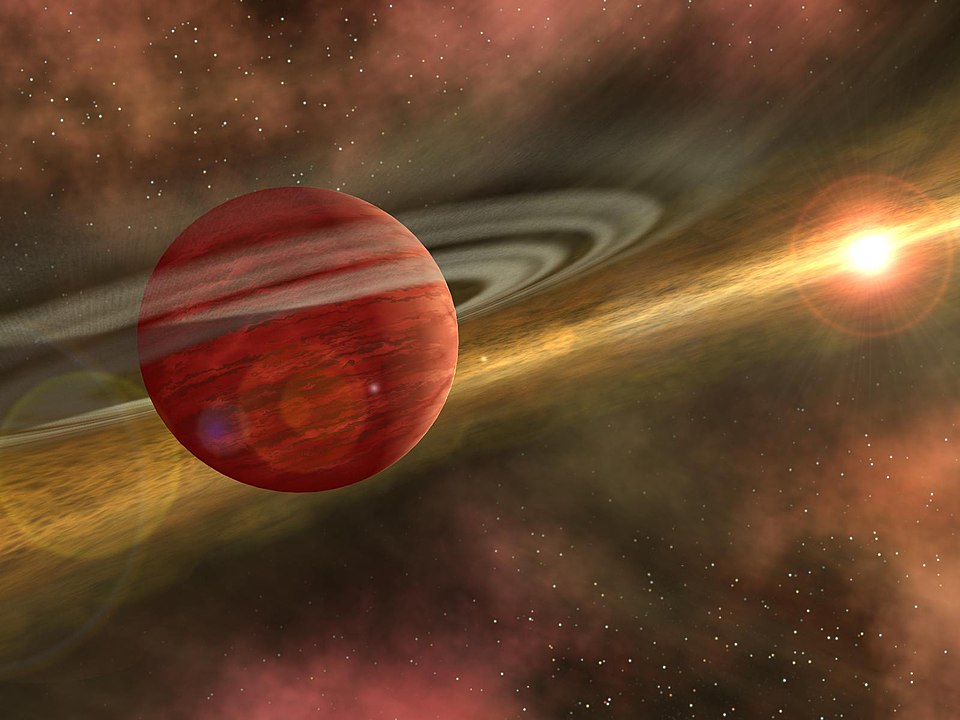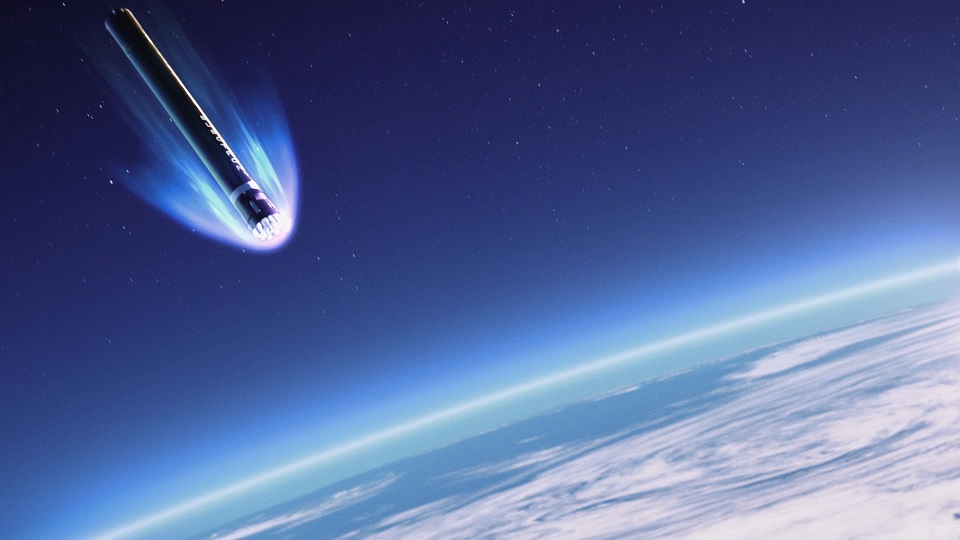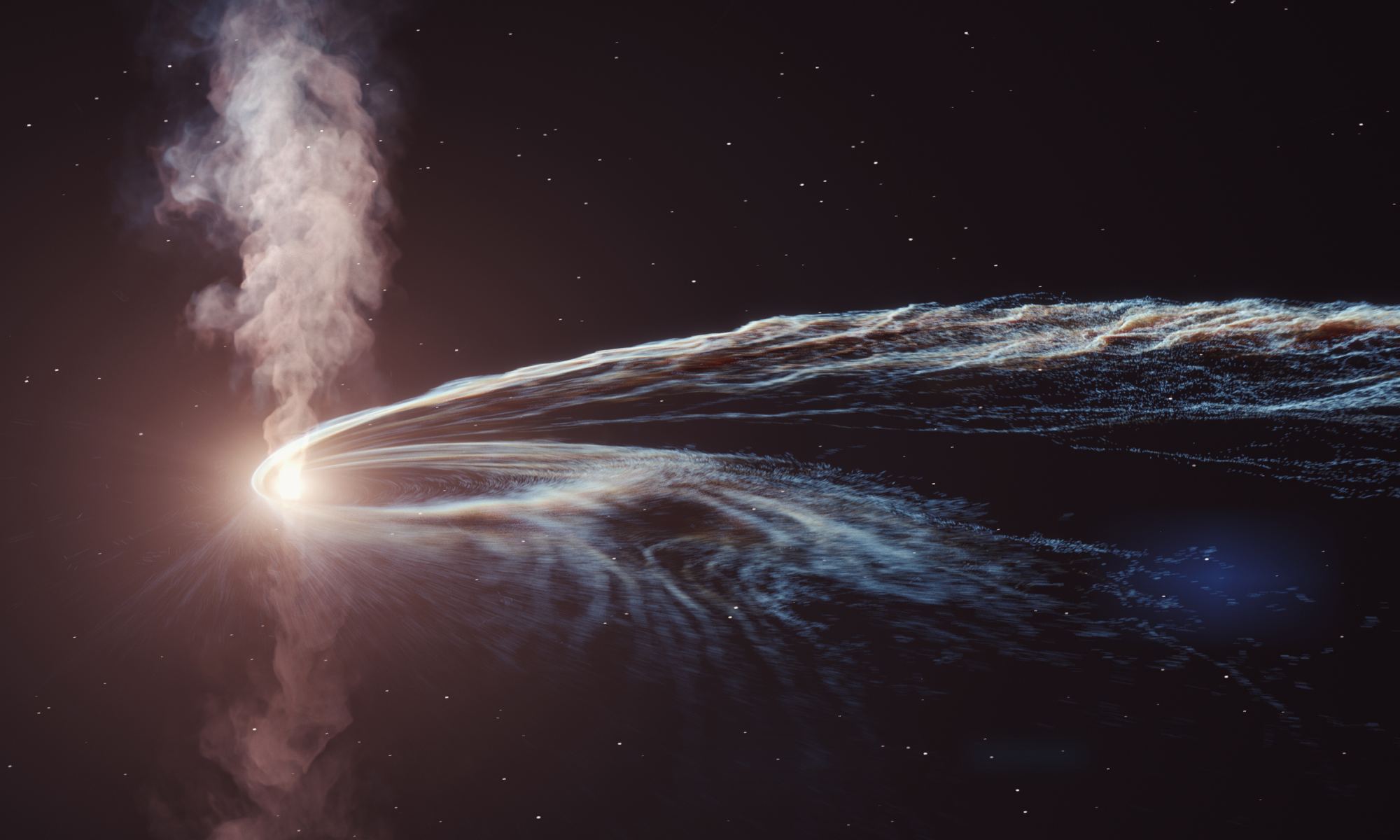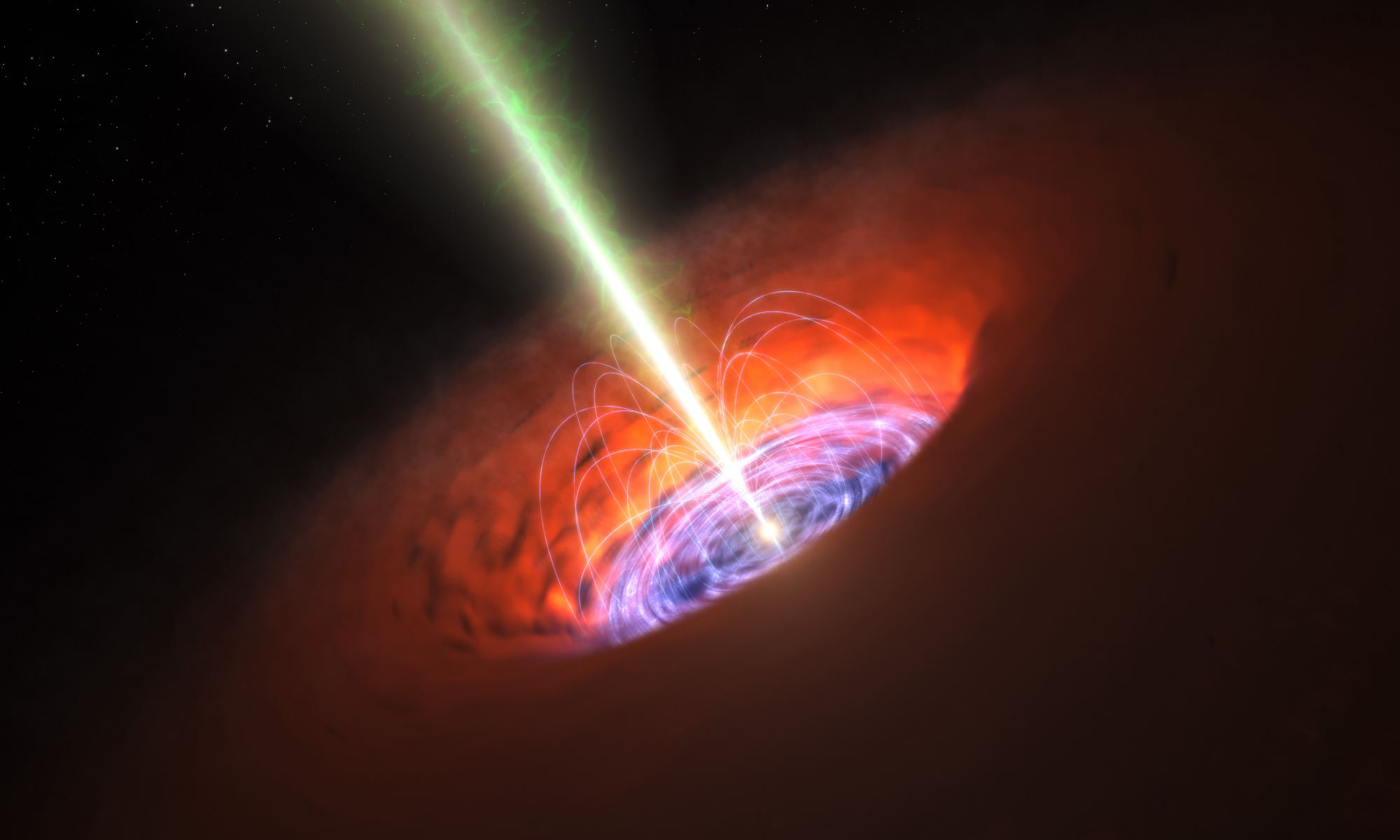As the ages pass the Moon slowly drifts away from the Earth. In conjunction the length of our day gradually gets longer. For the first time astronomers have been able to estimate the length of the day and the distance to the Moon as it was almost two and a half billion years ago. Back then, our day was only 17 hours long.
Continue reading “2.46 Billion Years ago, a day on Earth was Only 17 Hours and the Moon was Much Closer”Hubble Examines the Wreckage From the 2017 Kilonova
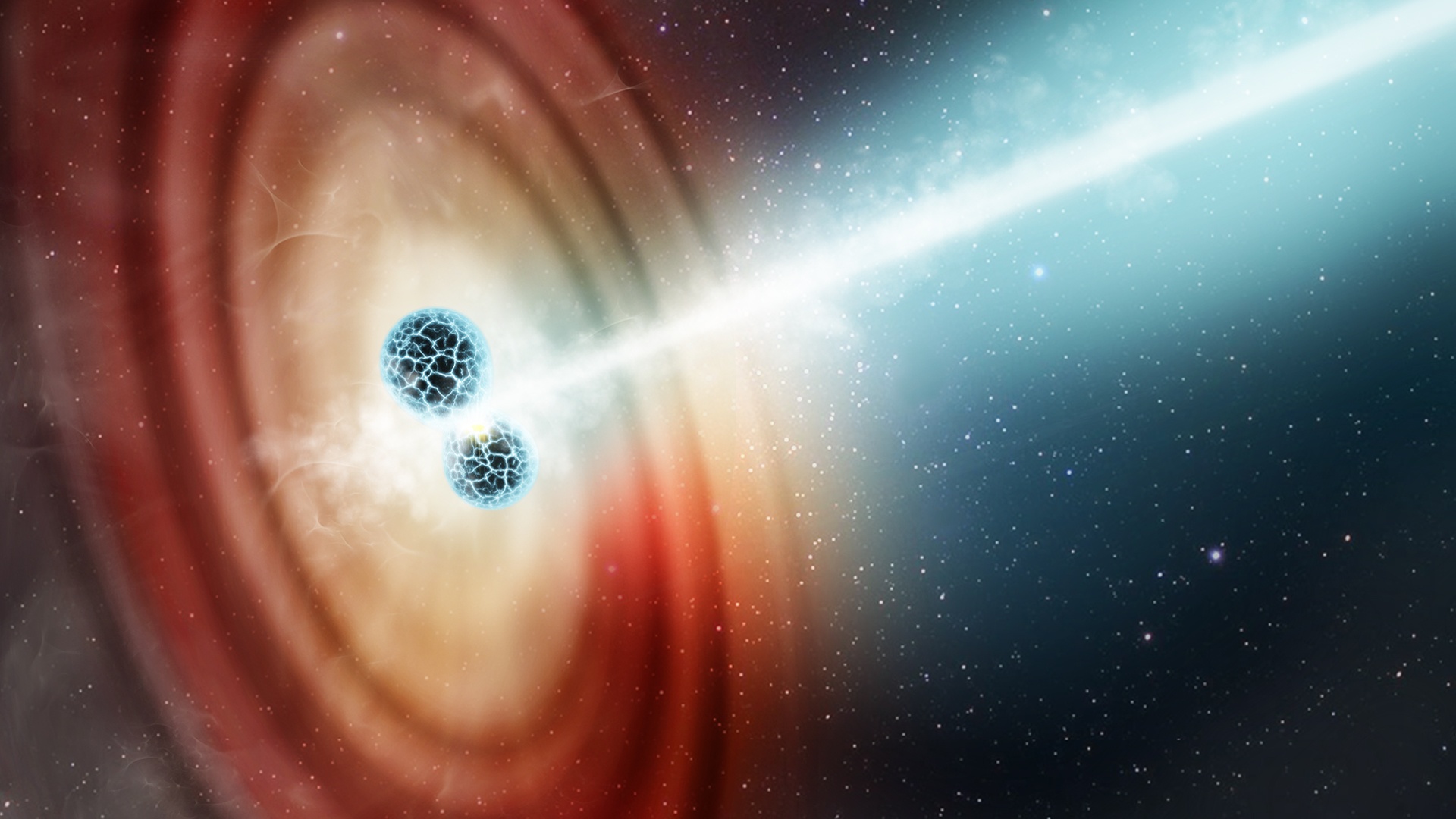
In August 2017, astronomers observed a Gravitational Wave (GW) signal that resulted from the merger of two neutron stars – known as a “kilonova” event. The aftermath of this event (GW170817) was studied by 70 ground-based and space-based observatories in multiple wavelengths. This was the first time astronomers observed a binary neutron star merger in terms of electromagnetic radiation (particularly gamma rays) and GWs. The energy released by this merger was comparable to that of a supernova, leading astronomers to theorize that it must have resulted in a black hole.
Two years later, the Hubble Space Telescope observed the remnant and noted the powerful afterglow and gamma-ray bursts (GRBs) created by the merger, which was consistent with a black hole. However, it would take several more years of analysis before scientists could draw a complete picture of what resulted from this explosive event. Using data from Hubble and several radio observatories, a team of researchers detected a rapidly-rotating disk of material around the black hole and a structured relativistic jet emanating from it.
Continue reading “Hubble Examines the Wreckage From the 2017 Kilonova”Planet Formation Doesn’t Have to be a Rush job After all
Astronomers believe that it can take 10 million years or more to build a planet like the Earth. But studies of protoplanetary disks show that they can only last 1 to 3 million years. How can planet formation finish if the material its made from disappears so quickly? A team of astronomers have proposed a solution: it’s a simple matter of bias in our observations.
Continue reading “Planet Formation Doesn’t Have to be a Rush job After all”Shortly Before They Collided, two Black Holes Tangled Spacetime up Into Knots

In February 2016, scientists at the Laser Interferometer Gravitational-Wave Observatory (LIGO) announced the first-ever detection of gravitational waves (GWs). Originally predicted by Einstein’s Theory of General Relativity, these waves are ripples in spacetime that occur whenever massive objects (like black holes and neutron stars) merge. Since then, countless GW events have been detected by observatories across the globe – to the point where they have become an almost daily occurrence. This has allowed astronomers to gain insight into some of the most extreme objects in the Universe.
In a recent study, an international team of researchers led by Cardiff University observed a binary black hole system originally detected in 2020 by the Advanced LIGO, Virgo, and Kamioki Gravitational Wave Observatory (KAGRA). In the process, the team noticed a peculiar twisting motion (aka. a precession) in the orbits of the two colliding black holes that was 10 billion times faster than what was noted with other precessing objects. This is the first time a precession has been observed with binary black holes, which confirms yet another phenomenon predicted by General Relativity (GR).
Continue reading “Shortly Before They Collided, two Black Holes Tangled Spacetime up Into Knots”Uncontrolled Rocket Reentries are a Bigger Problem Than you Think
Over 60% of the launches in 2020 resulted in one or more rocket parts making an uncontrolled reentry into the atmosphere. While thankfully no one was hurt by that debris, with the expected rise in rocket launches over the coming decade the chances of a casualty are increasing. A new study paints the picture of how current methods of assessing risk are inadequate and new steps need to be taken.
Continue reading “Uncontrolled Rocket Reentries are a Bigger Problem Than you Think”TESS has Resumed Normal Operations
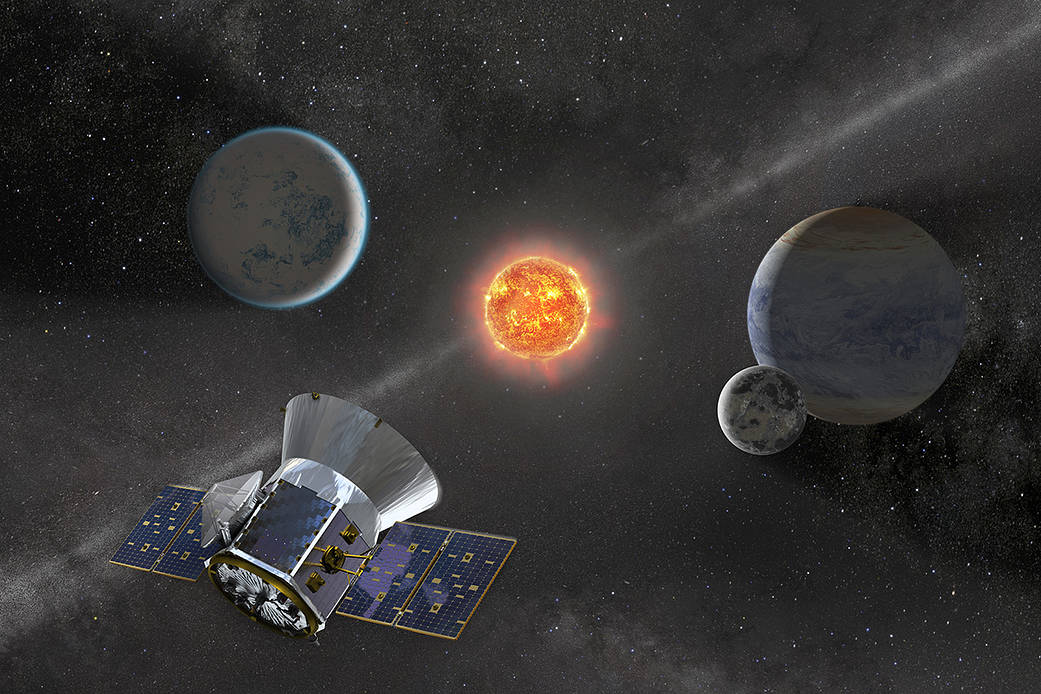
In April 2018, NASA launched the Transiting Exoplanet Survey Satellite (TESS), the successor to the Kepler Space Telescope that revolutionized the exoplanet studies field. Like its predecessor, TESS has been scanning almost the entire sky for five years for extrasolar planets using the Transit Method. This consists of monitoring thousands of stars for periodic dips in brightness, which may indicate a planet passing in front of the star relative to the observer. To date, TESS has made 243 confirmed discoveries, with another 4562 candidates – or TESS Objects of Interest (TOI) – awaiting confirmation.
On Monday, October 10th, fans of the TESS mission and the research it conducts got a bit of a scare as the observatory experienced a malfunction and had to be put into safe mode. Three days later, at around 06:30 PM EDT (03:30 PM PDT) on October 13th, NASA announced that their engineers had successfully powered up the instrument and brought it back online. While technicians at NASA are still investigating the cause of the malfunction, the spacecraft is now back in its fine-pointing mode and has resumed its second extended mission (EM2).
Continue reading “TESS has Resumed Normal Operations”Huge DART Success, JWST Sees Weird Rings, Moon’s True Origin
DART’s results are in and they exceed all expectations. The Moon might just be a big chunk of the Earth that formed in just hours. Webb sees bizarre rings around a star, and SLS gets a new launch date… at night.
Continue reading “Huge DART Success, JWST Sees Weird Rings, Moon’s True Origin”A Black Hole Burps out Material, Years After Feasting on a Star
Originally predicted by Einstein’s Theory of General Relativity, black holes are the most extreme object in the known Universe. These objects form when stars reach the end of their life cycle, blow off their outer layers, and are so gravitationally powerful that nothing (not even light) can escape their surfaces. They are also of interest because they allow astronomers to observe the laws of physics under the most extreme conditions. Periodically, these gravitational behemoths will devoir stars and other objects in their vicinity, releasing tremendous amounts of light and radiation.
In October 2018, astronomers witnessed one such event when observing a black hole in a galaxy located 665 million light-years from Earth. While astronomers have witnessed events like this before, another team from the Harvard & Smithsonian Center for Astrophysics noticed something unprecedented when they examined the same black hole three years later. As they explained in a recent study, the black hole was shining very brightly because it was ejecting (or “burping”) leftover material from the star at half the speed of light. Their findings could provide new clues about how black holes feed and grow over time.
Continue reading “A Black Hole Burps out Material, Years After Feasting on a Star”Webb Sees Organic Molecules in the Hearts of Galaxies, Surprisingly Close to Active Supermassive Black Holes
When the James Webb Space Telescope (JWST) launched, one of its jobs was studying galactic formation and evolution. When we look around the Universe, today’s galaxies take the shape of grand spirals like the Whirlpool galaxy and giant ellipticals like M60. But galaxies didn’t always look like this.
We don’t see these shapes when we look at the most distant and most ancient galaxies. Early galaxies are lumpy and misshapen and lack the structure of modern galaxies.
A new study based on JSWT observations looks at organic molecules near galactic centers. The researchers say observing these molecules can teach us a lot about galactic evolution.
Continue reading “Webb Sees Organic Molecules in the Hearts of Galaxies, Surprisingly Close to Active Supermassive Black Holes”Success! DART Impact Shortened Asteroid’s Orbit Time by 32 Minutes
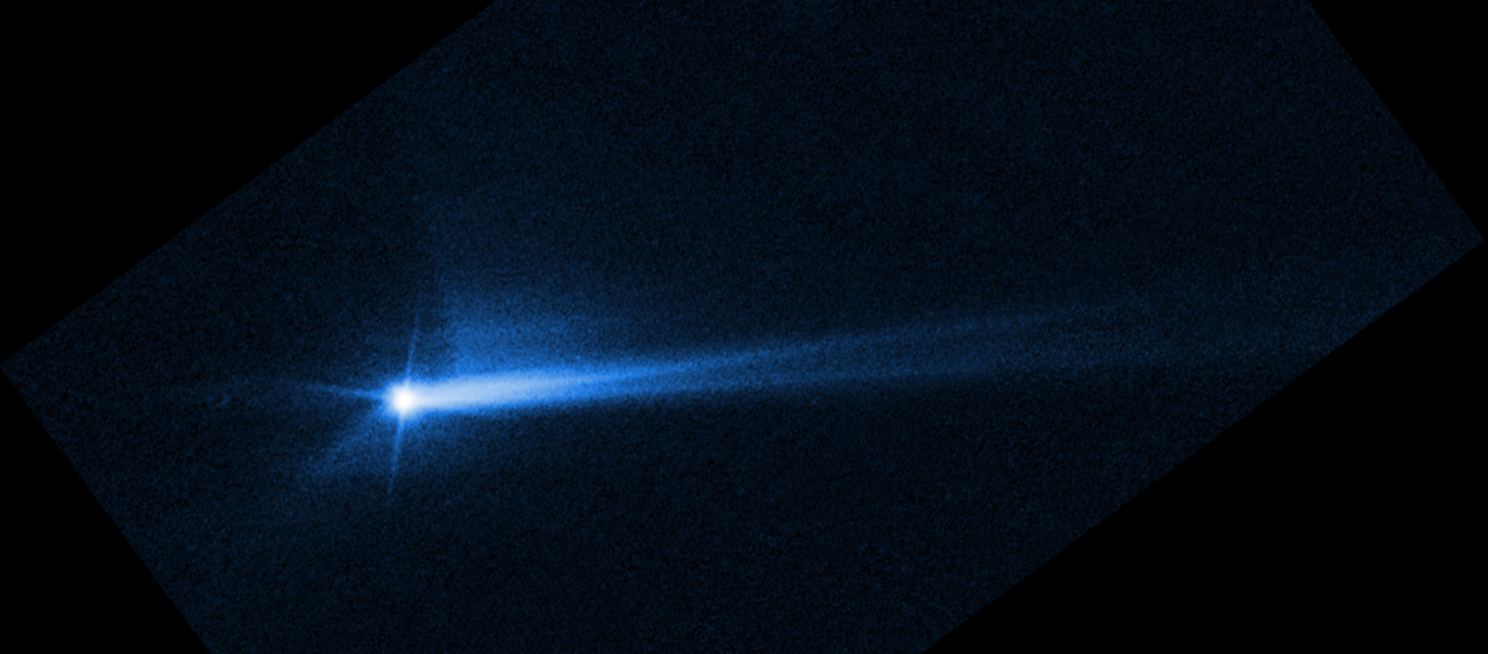
NASA says its DART spacecraft caused a larger-than-expected change in the path of its target asteroid when they collided two weeks ago — marking a significant milestone in the effort to protect our planet from killer space rocks.
Ten months after it was launched, the Double Asteroid Redirection Test’s refrigerator-sized robotic probe crashed into a 560-foot-wide asteroid called Dimorphos on Sept. 26, as it circled a bigger asteroid known as Didymos. The paired asteroids were 7 million miles from Earth at the time, and posed no threat to Earth before or after the smashup.
Before the crash, DART’s science team said they expected the collision to reduce the time it took for Dimorphos to go around Didymos by about 10 minutes. NASA would have regarded any change in excess of 73 seconds as a success.
After the crash, detailed observations from ground-based observatories showed that the orbit was actually 32 minutes shorter — going from 11 hours and 55 minutes to 11 hours and 23 minutes. That’s three times as much of a change as scientists were expecting. Scientists also said Dimorphos appears to be slightly closer to Didymos.
“This is a watershed moment for planetary defense, and a watershed moment for humanity,” NASA Administrator Bill Nelson said today. “All of us have a responsibility to protect our home planet. After all, it’s the only one we have.”
Continue reading “Success! DART Impact Shortened Asteroid’s Orbit Time by 32 Minutes”

